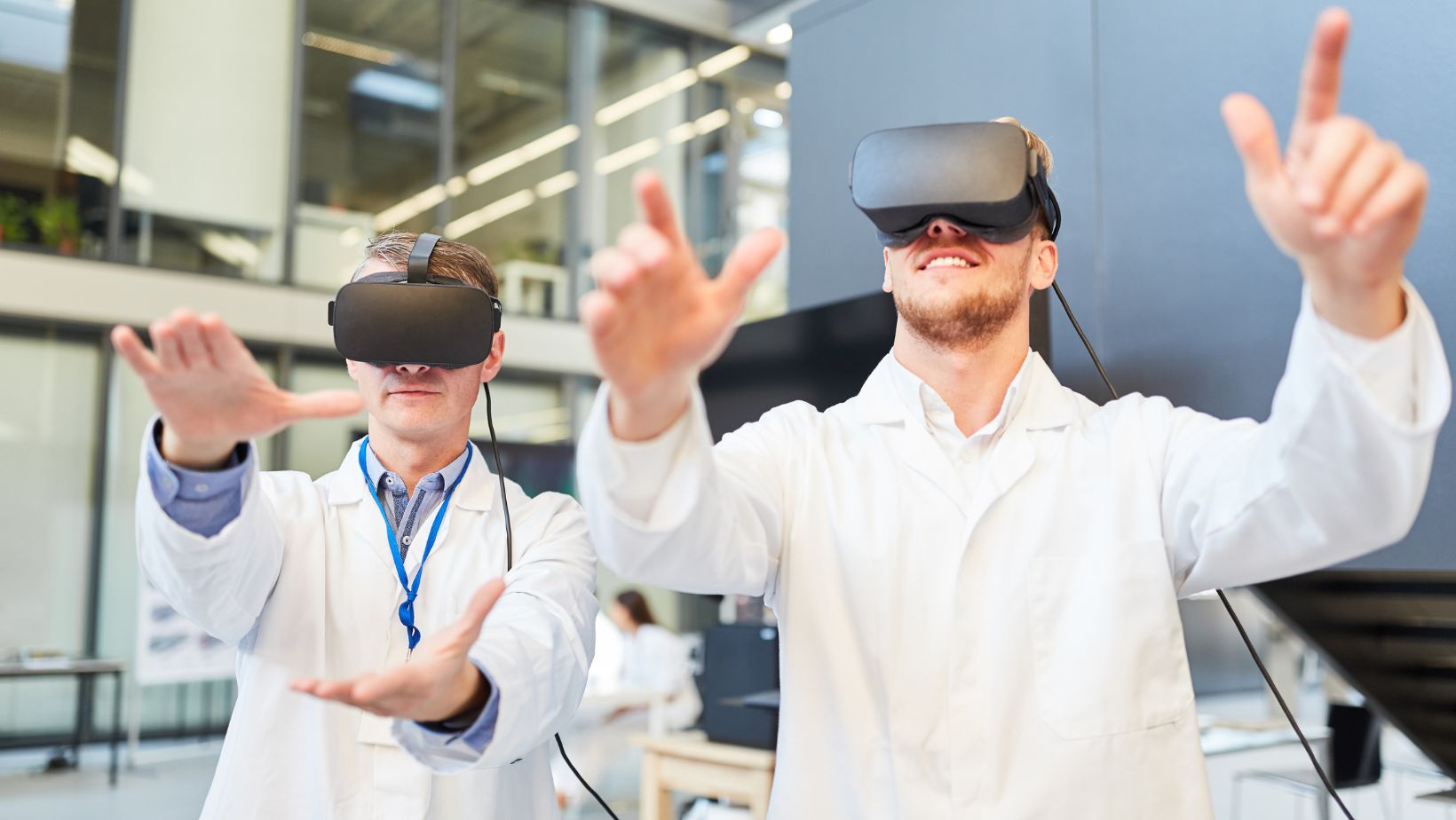
Within these 3D virtual environments, learners can engage in hands-on activities, practice procedural tasks, and simulate interactions, all in a manner that closely resembles on-the-job experiences. This dynamic approach to learning not only accelerates the learning curve but also improves long-term retention of information.
Furthermore, virtual training eliminates the constraints of physical location and environment, making it particularly valuable during times like the recent pandemic. Learners can safely explore and learn from their mistakes without fear of real-world consequences.
VR Training vs. Virtual Training
Virtual reality and virtual training represent two distinct methods for educating participants, each leveraging digital technology while differing in their immersive nature.
Virtual training, or online training, encompasses web or computer-based programs accessible remotely. It includes various e-learning modules, webinars, and digital courses, offering flexibility and accessibility to learners. E-learning platforms like Udemy and Coursera provide a wide array of online courses tailored to the evolving needs of a hybrid workforce.
In contrast, VR training elevates immersion by transporting learners into realistic, three-dimensional environments where they can interact with objects, scenarios, and other users. This immersive approach enables experiential learning, allowing users to practice skills and decision-making in lifelike settings.

While both methods have advantages, VR training provides hands-on experience, which is particularly beneficial for healthcare, aviation, and manufacturing industries. In these sectors, where practical application is crucial, VR training’s immersive experience effectively bridges the gap between theory and practice.
Why Now is the Time for VR Training
What does it require to transition an emerging technology into the mainstream? According to academic theory, for widespread adoption, VR training must effectively showcase real-world impact and minimize the actual and perceived effort required to learn and use the new technology.
Fortunately, VR training is making significant strides in both these areas, positioning it on the brink of widespread adoption at scale.
The Tech Is Ready.
Once reserved for high-end and time-consuming training programs like flight simulators, immersive technology has become accessible to businesses of all sizes.
Moreover, the VR industry has progressed beyond reliance on gaming controllers for interaction. Hand and eye tracking have become commonplace, enabling users to engage in virtual environments naturally. The advancement enhances training outcomes, streamlines adoption efforts, and broadens accessibility to VR training applications.
Hybrid Working Is The New Normal.
More and more companies are adopting hybrid working as the norm. Virtual environment training significantly reduces the impact of location as a barrier.

This means that individuals can receive training from any site globally, all while maintaining natural interactions with colleagues and trainers.
Roi Data From Early Adopters Is Convincing.
The effectiveness of VR training is evident as businesses worldwide are actively integrating VR into their training programs and sharing successful outcomes. Data generated from VR training is shaping strategic business decisions today, indicating that VR training is no longer limited to early adopters.
Where We Are Going
As organizational training evolves, it’s crucial to incorporate learning technologies into your toolkit. These technologies broaden the scope of training methods and how they are implemented. With in-person interactions becoming less common, practical training requires technologies to replicate the in-person experience remotely.
VR offers a versatile tool for training, enhancing employee engagement, and information retention. VR transforms how employees interact with training materials for hard or soft skills training. For organizations, it provides valuable insights into training effectiveness through advanced metrics, enabling informed decision-making to adapt to evolving business conditions.
In essence, VR training is poised to become an essential component of training programs for the future workforce. It revolutionizes how employees learn and enhance performance by offering specific, actionable feedback like never before.
Conclusion
While a learning curve may be associated with integrating VR into business learning and employee training, the benefits outweigh the challenges.
Businesses are realizing the effectiveness of VR for training purposes. It allows employees to practice skills within a safe, controlled environment, receive immediate feedback, and engage in hands-on learning experiences. In many cases, VR training surpasses the effectiveness of traditional training methods, making it a valuable investment for businesses seeking to enhance their training programs.














